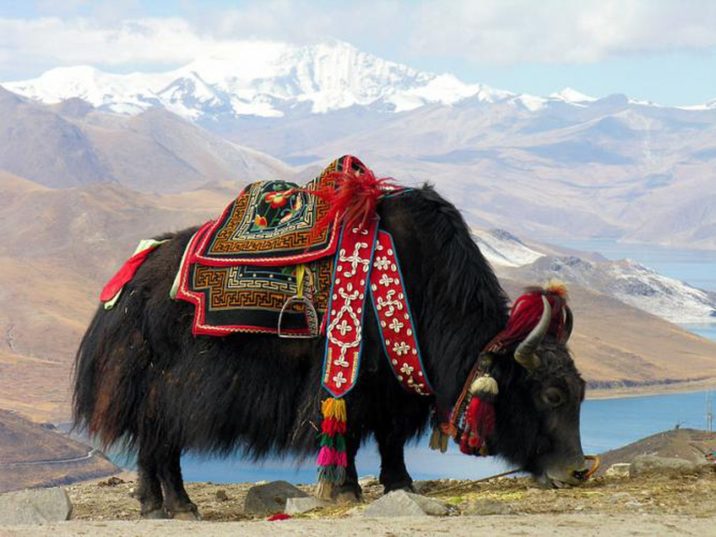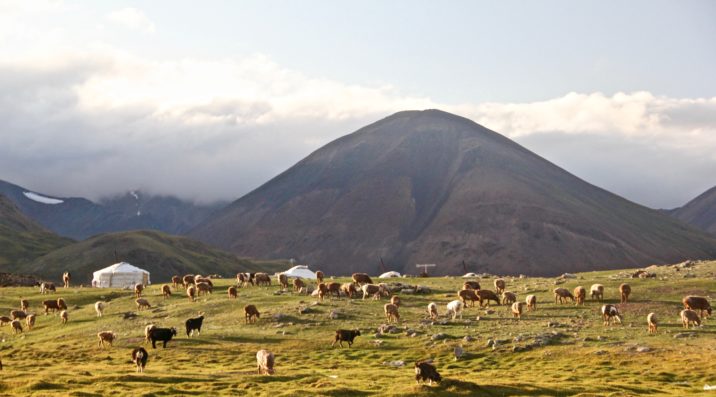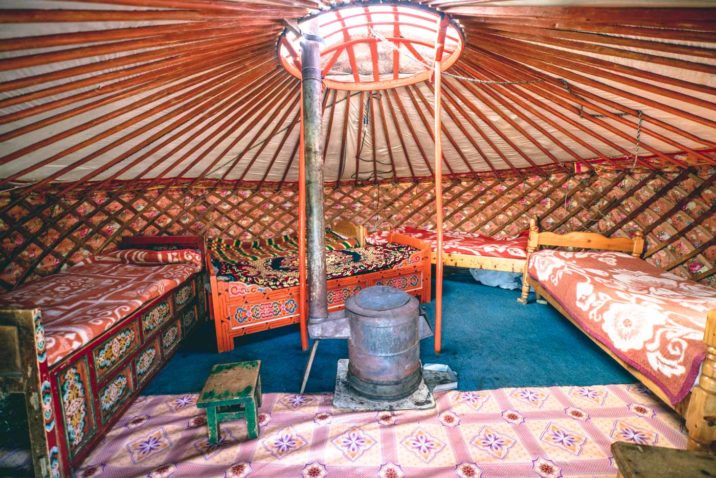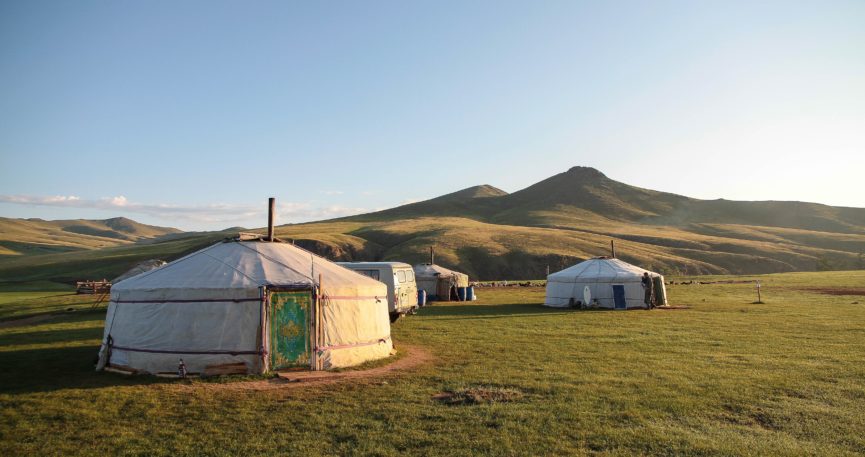Cover photo by Vince G
There’s something completely magical about cooking over an open flame. Fire brings us together not just for sharing a meal, but for experiencing lasting moments of laughter, love, and community.
In the Common Flame, we discover how cultures across the world are united by a common love of cooking over an open flame. In this edition, we’re wandering the Mongolian Steppes with the nomadic culture that calls the fields their home as they follow their herds of thousands of cattle, sheep, goats, camels, and yaks. Learn how the Mongolian yurt is the center of family life and how you can make your own, truly Mongolian kebabs.

The Nomadic Way
The people of the Mongolian Steppes have lived this way for centuries: following their herds of sheep, goats, cows, horses, camels, and yaks wherever they roam. Modern life amongst the Mongolian nomadic people hasn’t changed much throughout the years. They still follow the herd, but now they own the animals, sometimes up to one thousand livestock at a time. They set up their tent houses known as ger (we know them to be yurts) twice a year during spring and summer. The only major change is their lean adoption of technology. Wi-Fi and smart phones have found their way into Mongolian ger (pronounced “gair”), but only by necessity. When you move twice a year, you have to think about what’s essential to your life and what can make it easier.

Inside a ger, you’ll find many of the comforts you find in your own home. Comfy couches covered in ornate, patterned rugs, cupboards and kitchen cabinets, and sometimes refrigerators and televisions. But the wood stove used for cooking and keeping warm in the cold winters in the heart of the ger, and the heart of Mongolian culture.

Cooking the Mongolian Way
When you think about Mongolian food, your mind probably thinks of restaurants with a buffet-style serving of raw meat, vegetables, and a slew of sauces to take to the chef at the end of the line who sears your food together on a flat-top grill. This type of “Mongolian BBQ” is far from the true Mongolian cuisine. That type of Mongolian cuisine is actually Taiwanese in origin, introduced to Mongolia by way of an American company.
True Mongolian cuisine mirrors their nomadic lifestyle. Vegetables are hardly on the menu dominated by meat and milk. True Mongolian barbeque is called khorkhog and is typically served on special occasions due to the sheer quantity of meat used in the dish. If your main resource is your cattle, you do your best to preserve it. Khorkhog is made by cooking large chunks of beef or mutton in a pressure cooker lined with large stones that have been heated over an open flame. You start by adding a small amount of water into the pot, then the meat, hot rocks, and salt and pepper. Keep layering until the pot is full and place it over an open fire to cook for hours until the meat is fall-off-the-bone tender.
Chef Baysaa Khan of the popular Youtube channel ARTGER is on a mission to educate the world about true Mongolian culture and cuisine while making many of their traditional dishes accessible to those who want to give them a try at home.
Check out “The Grand Khan’s” crispy chicken and beef kebab’s recipe, known in Mongolia as shorlog. Shorlog is pure Mongolian cuisine using the two pillars of mongolian cuisine: meat and dairy. The chicken legs are scored and marinated in a mixture of garlic, chili peppers, curry powder, ginger, yogurt, and milk vodka. That’s kebab number one. The next set of kebab is made by simply sprinkling thin slices of beef and chicken with salt and rolling them together. After the meat is marinated, Khan sprinkles the kebabs with oil, places them onto swords, and cooks them over hot coals. Khan uses a whole branch of fenugreek leaves to dab more marinade over the kebabs as they cook until the meat is charred and tender. After the meat is done, Khan chops up some fresh tomato and onion and eats the kebabs right off the bone.
This dish can easily be made on the Solo Stove Grill! Just follow the recipe for the marinade in the video above. You might not have any swords handy to skewer your kebabs, but some wooden skewers will do just fine.

